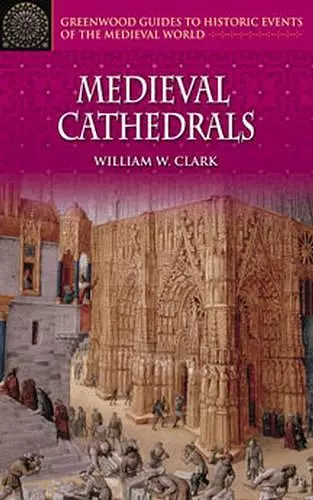Medieval Cathedrals
Format:Hardback
Publisher:Bloomsbury Publishing PLC
Published:30th Dec '05
Currently unavailable, and unfortunately no date known when it will be back

An introduction to the medieval cathedral, those churches that are regarded as the greatest achievements of medieval architecture. Details their social history, who built them, how they were built, and why. Forty photos and maps help to guide the reader through a narrated tour of these awe-inspiring churches. When we think of cathedrals, we usually envision the great Gothic Buildings of 12th- and 13th-century Europe. But other than being a large church, a cathedral is neither a specific building type nor specifically medieval. What a makes a large church a cathedral is the presence of a single item of furniture: the chair (in Latin: cathedra) or throne that is the symbol of the ecclesiastical and spiritual authority of a bishop. This book is an introduction to the medieval cathedral, those churches that are usually regarded as among the greatest achievements of medieval architecture. While cathedrals were often the most prominent urban structure in many European cities, their construction was never a civic responsibility, but remained the responsibility of the clergy in charge of the day to day activities and services. Beginning with an overview of the social history of cathedrals, Clark examines such topics as patrons, builders and artists, and planning and construction; and provides an in-depth examination of the French Cathedral at Reims—a seminal building with significant technological advances, important sculptural programs, a surviving bishop's palace, and other structures. The volume concludes with a series of illustrations, a selection of original texts, and a selected bibliography for further study. A full index is also provided.
Conceived for high schools as a ready reference and a stimulation for critical thinking, these books all follow a similar format: an overview, a range of examples (28 photos in this case), selected contemporary documents translated into English, a glossary, and an annotated bibliography….Although not all will agree with his decision to focus, e.g., on the power struggles between bishops and secular lords rather than on cities and their inhabitants, his deft handling of problems facing patron and builder, and the development in the Gothic era of new technologies with which to solve them, will provide students with a solid foundation….General readers; lower-division undergraduates; two-year technical program students. * Choice *
Clark examines the religious architecture found in the cathedral (chair of the bishop) or great church, studied in terms of its architecture, sculpture, and stained glass. Coverage includes an overview of the concept of the bishop and his role within the church hierarchy; the growth of the church in the early Christian era and its affiliation with the bishop; the social history of cathedrals; patrons, builders and artists; and planning and construction. The text also includes a gazetteer of 25 important examples; a chronology; a selection of 53 primary documents, including historical documents about important events or social situations pertaining to cathedrals or ecclesiastical officials, and descriptive documents about cathedrals; a glossary of terms; and annotated bibliography. Academic but accessible to the general reader. * Reference & Research Book News/Art Book News Annual *
[M]edieval Cathedrals….[p]rovides plenty of primary source documentation throughout, adds black and white illustration examples of Gothic structures, and provides both architectural and spiritual insights. * The Midwest Book Review/California Bookwatch *
ISBN: 9780313326936
Dimensions: unknown
Weight: 624g
328 pages